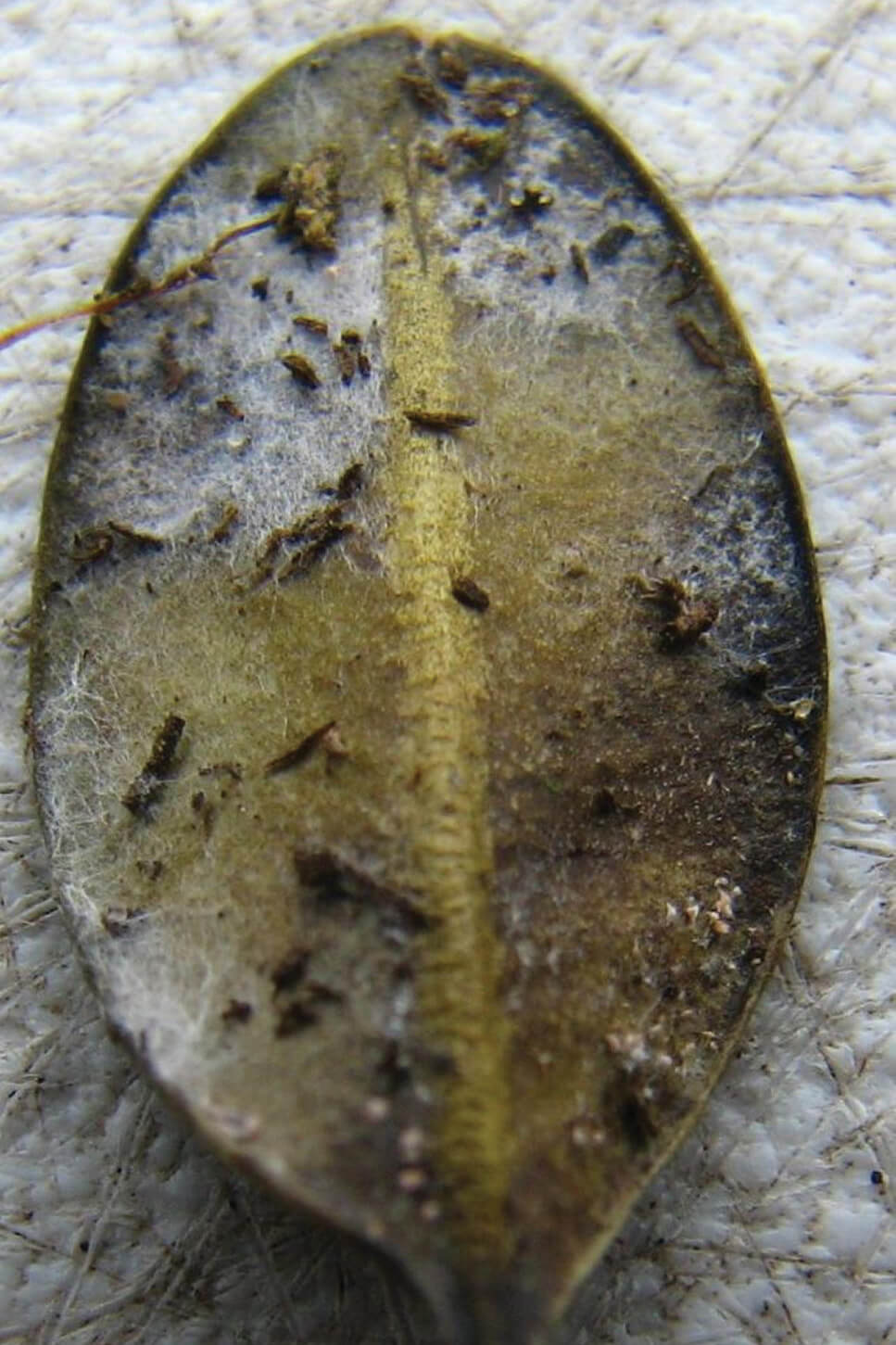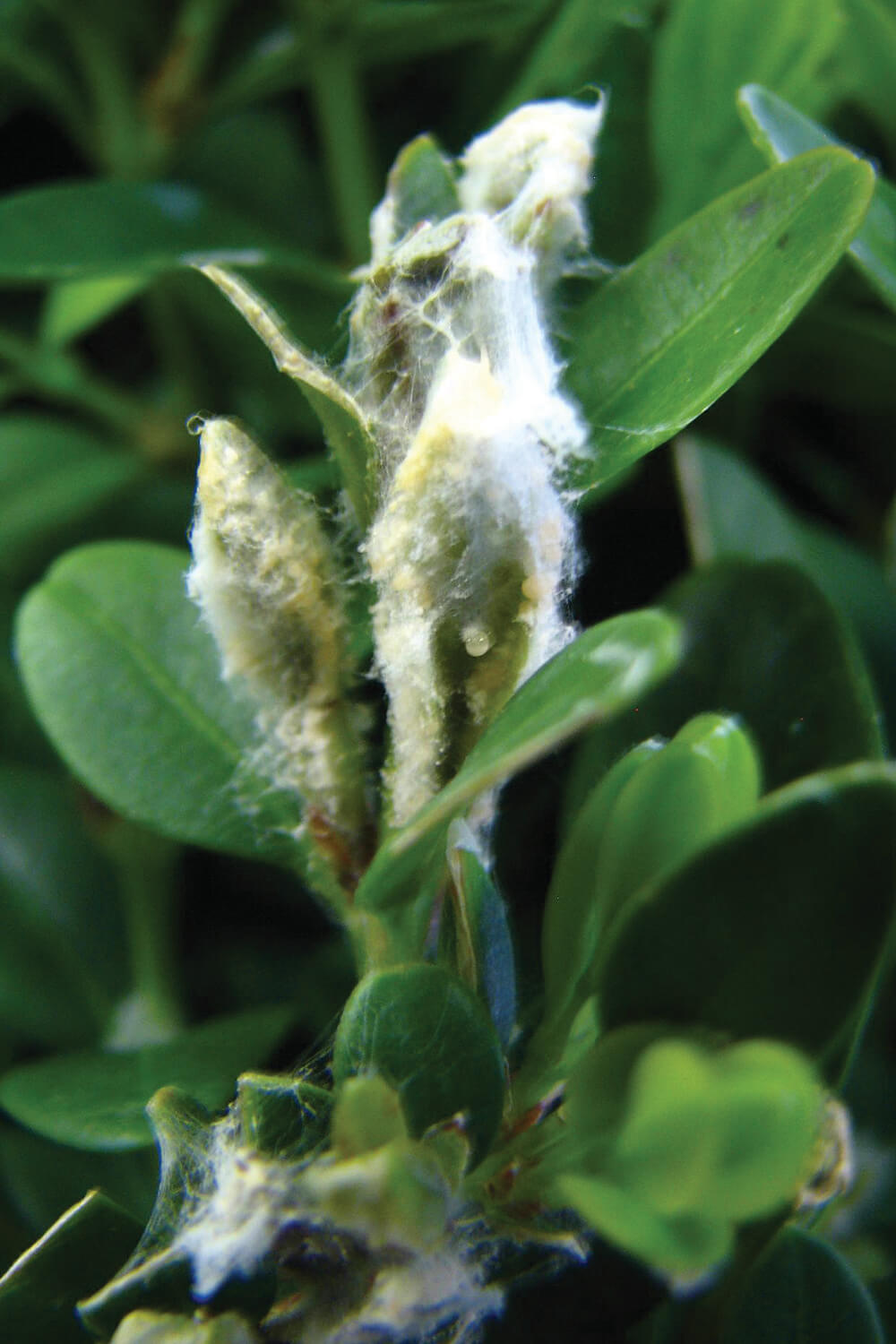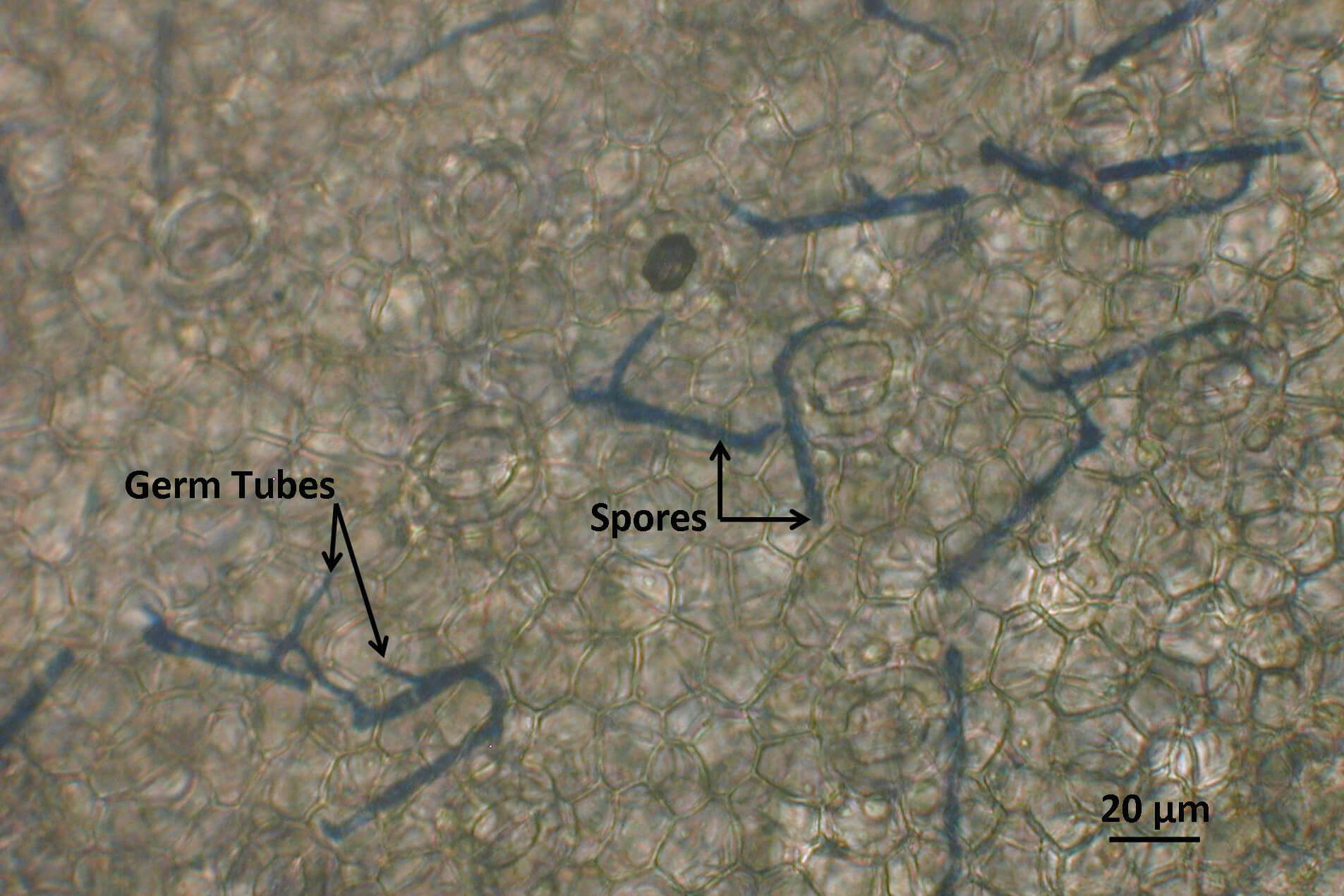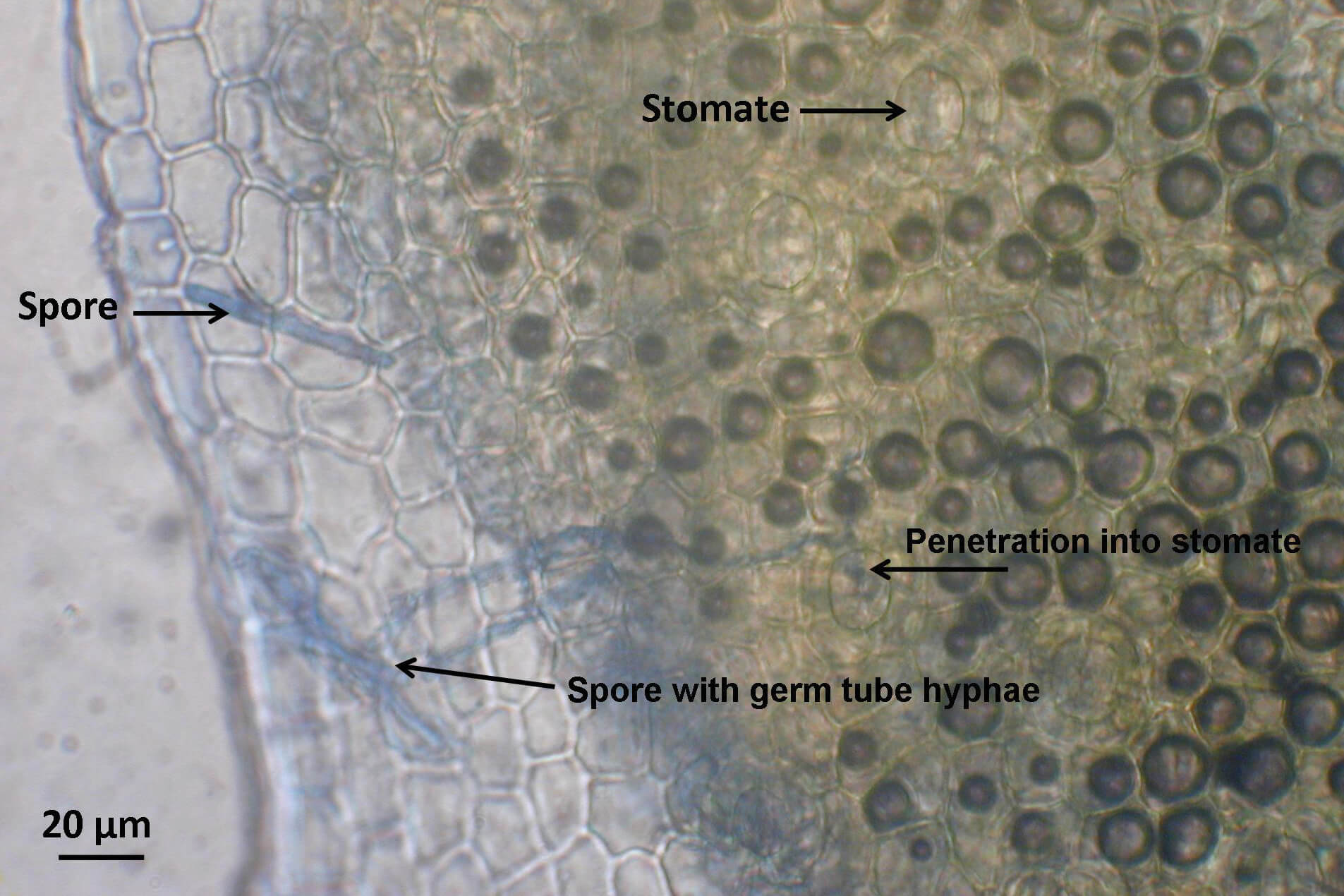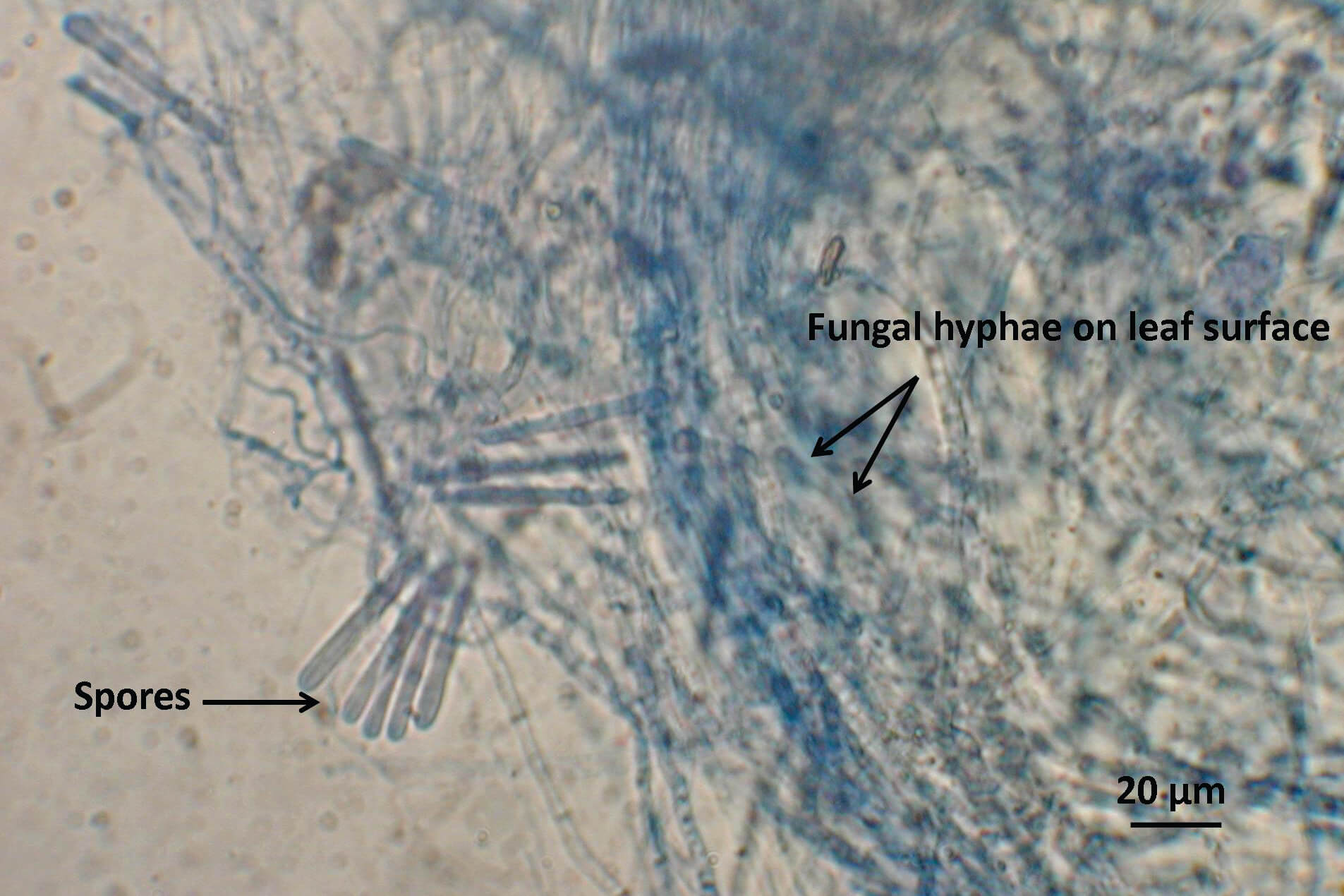May 15, 2013
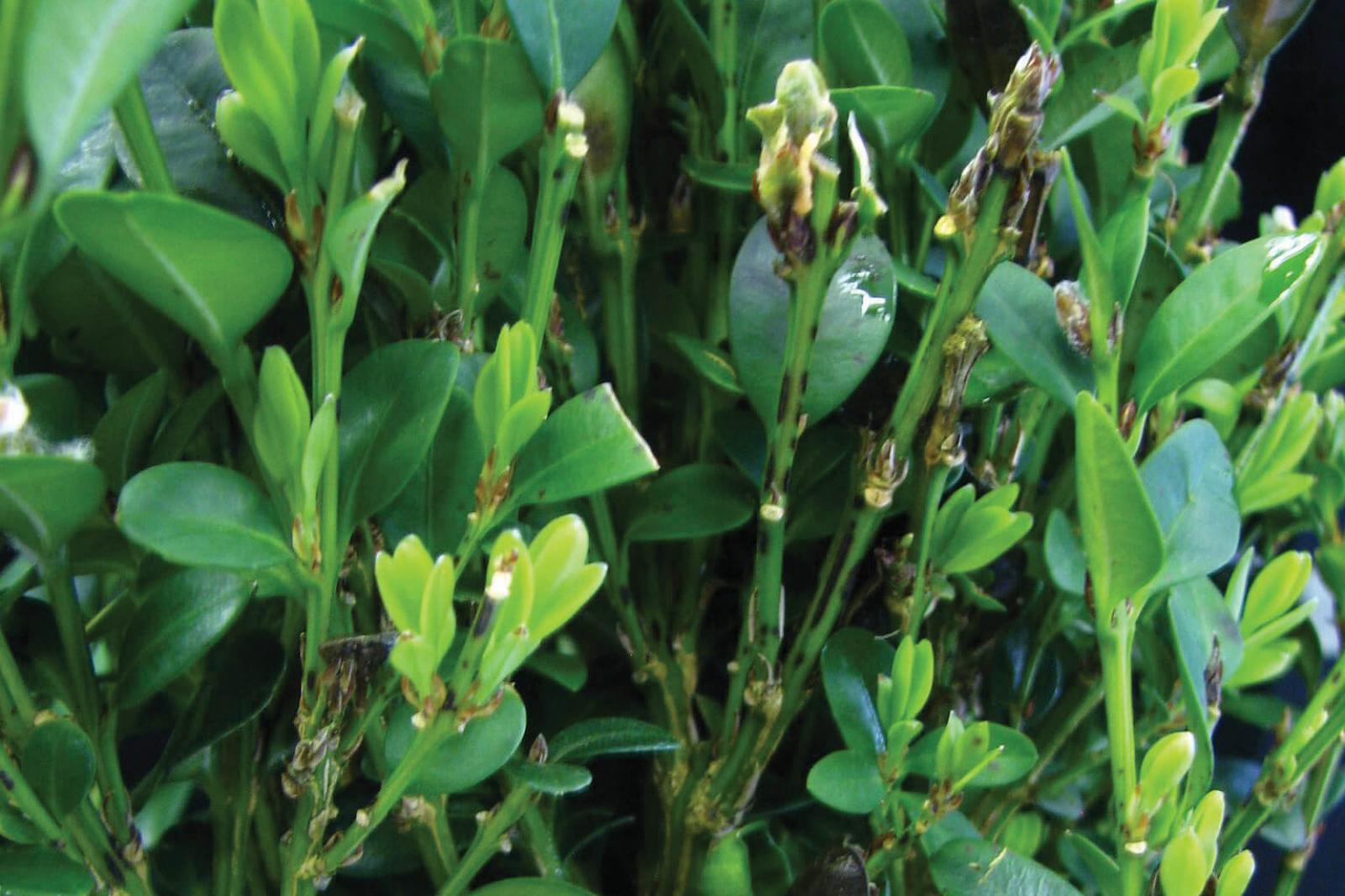
Research continues on management of boxwood blight
By Sarah Healy and Tom Hsiang
University of Guelph
University of Guelph researchers Tom Hsiang and Sarah Healy are attempting to understand the biology of Cylindrocladium buxicola, or boxwood blight.
Research on the fungus, the cycle of the disease, and ways to improve management is funded by Landscape Ontario with the assistance of Ontario nurseries.
A new fungus, C. buxicola, causes severe disease on boxwood plants and has created great concern for nursery growers in Ontario. The disease seriously affects the appearance and aesthetics of boxwood, causing the entire foliage to become blighted, making the plants unusable, and resulting in major economic losses.
Box blight has been observed to occur on many boxwood varieties from several geographic locations, including cultivars commonly grown in Ontario (Green Gem, Green Velvet, Green Mountain, and Green Mound).
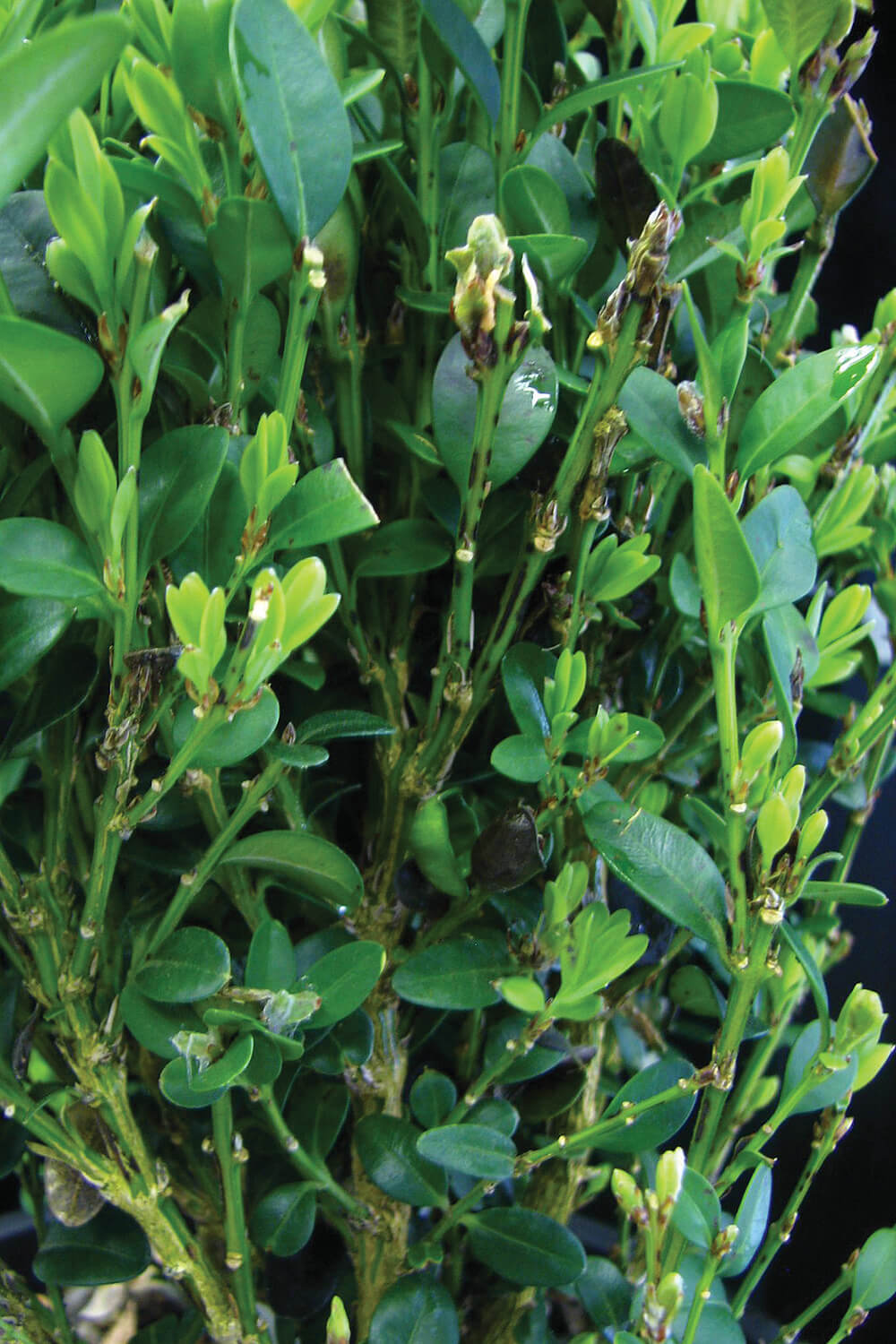 Figure 1: Symptoms of box blight include dark or light brown spots on leaves with dark borders, black streaks on stems, and bronzed foliage as well as severe defoliation.
Figure 1: Symptoms of box blight include dark or light brown spots on leaves with dark borders, black streaks on stems, and bronzed foliage as well as severe defoliation.
The cultural management methods for box blight include obtaining clean (pathogen-free) material, avoiding overhead irrigation, initiating sound sanitation methods, conducting weekly inspections and removing and destroying infected plants. Previous studies have demonstrated that box blight is difficult to control with fungicides, and attempts at fungicide control should be complemented with cultural management methods. Fungicides registered for emergency use in Ontario, B.C., and Quebec include Switch 62.5WG, and Daconil 2787 until December 31, 2013.
In April of 2012, we received two infected Green Mountain boxwood from a nursery in Southern Ontario, and we isolated C. buxicola from these infected samples. The fungus was identified based on DNA tests. Healthy boxwood and pachysandra leaves were inoculated with the fungus to determine if Pachysandra terminalis could be a potential host for box blight and to assess the susceptibilities of young versus old leaves, along with the susceptibilities of the different boxwood cultivars.
So far, we have discovered that C. buxicola can be isolated from inoculated symptomatic pachysandra leaves, which suggests that pachysandra may be a potential host for box blight. We also observed that after one week, inoculated young leaves become severely infected, while inoculated older leaves show no signs of infection.
We also conducted a temperature growth experiment to determine the optimal temperature for the growth of C. buxicola. Several fungal isolates from different regions were incubated at 4, 10, 15, 20, 25, and 30°C and we found that the optimal temperature for growth is 20°C, while there was little or no fungal growth at 4 or 30°C.
Analysis of the infection process on detached boxwood leaves revealed that the infection cycle of C. buxicola can be completed in less than three days. Detached Green Mountain leaves were inoculated with a spore suspension and incubated for up to seven days at 23°C. The the lower leaf surface was peeled back and dyed with a stain, called trypan blue, to observe the fungal infection process every two hours until sporulation was observed. The infection process revealed that spore germination occurred three hours after inoculation (Figure 4) and penetration into the plant occurred by 21 hours (Figure 5). Spore production generally started sometime between 72 hours and 120 hours after inoculation (Figure 6).
The importance of these results for the nursery industry is confirmation that this disease is present in Ontario and therefore poses a threat to nurseries selling or growing boxwood. This research also provides more information on the basic biology and optimal growing conditions of C. buxicola, highlighting how rapidly the infection cycle can be completed if the disease becomes established in a nursery setting.
University of Guelph
University of Guelph researchers Tom Hsiang and Sarah Healy are attempting to understand the biology of Cylindrocladium buxicola, or boxwood blight.
Research on the fungus, the cycle of the disease, and ways to improve management is funded by Landscape Ontario with the assistance of Ontario nurseries.
A new fungus, C. buxicola, causes severe disease on boxwood plants and has created great concern for nursery growers in Ontario. The disease seriously affects the appearance and aesthetics of boxwood, causing the entire foliage to become blighted, making the plants unusable, and resulting in major economic losses.
Box blight has been observed to occur on many boxwood varieties from several geographic locations, including cultivars commonly grown in Ontario (Green Gem, Green Velvet, Green Mountain, and Green Mound).
 Figure 1: Symptoms of box blight include dark or light brown spots on leaves with dark borders, black streaks on stems, and bronzed foliage as well as severe defoliation.
Figure 1: Symptoms of box blight include dark or light brown spots on leaves with dark borders, black streaks on stems, and bronzed foliage as well as severe defoliation.
The cultural management methods for box blight include obtaining clean (pathogen-free) material, avoiding overhead irrigation, initiating sound sanitation methods, conducting weekly inspections and removing and destroying infected plants. Previous studies have demonstrated that box blight is difficult to control with fungicides, and attempts at fungicide control should be complemented with cultural management methods. Fungicides registered for emergency use in Ontario, B.C., and Quebec include Switch 62.5WG, and Daconil 2787 until December 31, 2013.
In April of 2012, we received two infected Green Mountain boxwood from a nursery in Southern Ontario, and we isolated C. buxicola from these infected samples. The fungus was identified based on DNA tests. Healthy boxwood and pachysandra leaves were inoculated with the fungus to determine if Pachysandra terminalis could be a potential host for box blight and to assess the susceptibilities of young versus old leaves, along with the susceptibilities of the different boxwood cultivars.
So far, we have discovered that C. buxicola can be isolated from inoculated symptomatic pachysandra leaves, which suggests that pachysandra may be a potential host for box blight. We also observed that after one week, inoculated young leaves become severely infected, while inoculated older leaves show no signs of infection.
We also conducted a temperature growth experiment to determine the optimal temperature for the growth of C. buxicola. Several fungal isolates from different regions were incubated at 4, 10, 15, 20, 25, and 30°C and we found that the optimal temperature for growth is 20°C, while there was little or no fungal growth at 4 or 30°C.
Analysis of the infection process on detached boxwood leaves revealed that the infection cycle of C. buxicola can be completed in less than three days. Detached Green Mountain leaves were inoculated with a spore suspension and incubated for up to seven days at 23°C. The the lower leaf surface was peeled back and dyed with a stain, called trypan blue, to observe the fungal infection process every two hours until sporulation was observed. The infection process revealed that spore germination occurred three hours after inoculation (Figure 4) and penetration into the plant occurred by 21 hours (Figure 5). Spore production generally started sometime between 72 hours and 120 hours after inoculation (Figure 6).
The importance of these results for the nursery industry is confirmation that this disease is present in Ontario and therefore poses a threat to nurseries selling or growing boxwood. This research also provides more information on the basic biology and optimal growing conditions of C. buxicola, highlighting how rapidly the infection cycle can be completed if the disease becomes established in a nursery setting.
